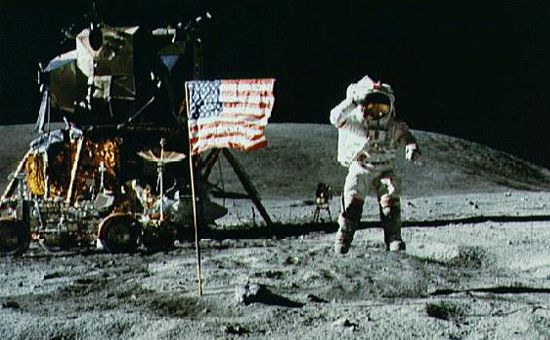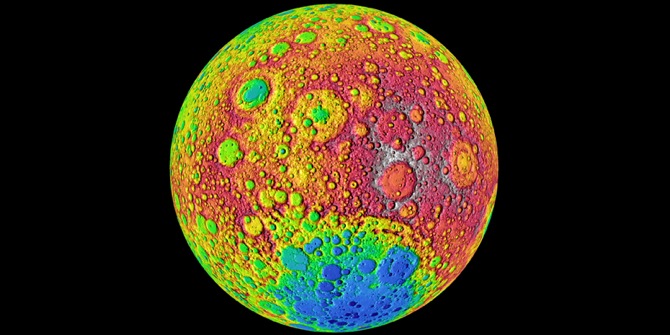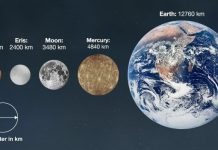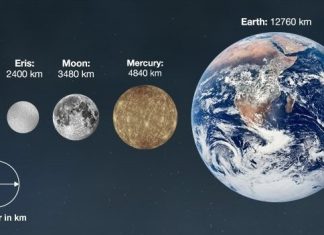
Are UFO’s visiting the moon?
There are many mysteries that NASA has failed to explain.
After spending billions in a race to the moon (and both USA and Russia planned to set up space stations on the moon) why haven’t they returned to the moon after 40 years?

Why did NASA detonate an atomic bomb on the south pole of the moon?
What causes the many strange lights on the moon?
Is the moon hollow?
Why does the moon have an unnatural orbit?
What happened to a million high definition photos from the NASA moon surveys?
Why have ruins on the moon not been investigated, and who built them?
Huge numbers of unidentified flying objects are reported each year. Where do these UFOs come from?
In September 2011, the US Science Department issued a statement on behalf of NASA and the US Government, that there was no evidence of any extra-terrestrial beings in our solar system; nor had there been any contact with such beings.
We have dozens of photos of ruined roads and buildings on the Chand.
These include photos of what appear to be a bridge, a tower, a castle, several huge domes, a couple of UFOs and hundreds of strange lights.
NASA recognises these strange lights and accepts them, so much so that they gave them a name; they are called transient lunar phenomena. NASA offers no explanation for the cause of these lights.
Perhaps the most outstanding moon mystery surrounds its origins. The most popular theory states a colossal smash-up went down about 4.5 billion years ago.
In November 1996, NASA’s Clementine spacecraft raised eyebrows when it indicated the possible presence of frozen water. Less than two years later, the Lunar Prospector spacecraft backed up the notion. But the cold, hard evidence was still missing.
NASA and other space agencies are stoked about the prospect of lunar ice; not only could its save the trouble of hauling water on manned missions, but it would also tell us more about the moon’s past. If ice truly does exist, it likely traveled to the moon aboard an asteroid, comet or other fragment.
We finally saw the moon’s hidden side in 1959, thanks to the Soviet Union’s Luna 3 spacecraft. The so-called ‘dark side’ (a misnomer, since it sees just as much sunlight as the near side) wasn’t home to fabulous cities, but the landscape did have a shockingly different look.

In addition to massive impact craters, the moon’s near side is characterized by its lunar ‘seas’ where magma seeped from the ground and filled in smaller craters. Flip to the far side, however, and you’ll find mostly bright stretches of countless craters with few signs of larger impacts or lava fields.
Scientists think few big craters show up on the far side because it once faced the Earth, receiving fewer big wallops during the Late Heavy Bombardment. As for all of those small craters mostly unfilled by lava? By the time the moon did do a 180-degree spin, its crust had cooled considerably — permitting far less magma to leak to the surface and fill in any craters.
Evidence of life on the moon
Perhaps surprisingly, lunar cold traps could preserve any number of organic substances. In the same way that Earth’s permafrost occasionally yields an intact wooly mammoth carcass, these frozen pits could harbor far older organisms. What strange and ancient life might await us in those chilling, lightless depths?
It’s a long shot, but there’s always the chance that hardy microbes from Earth or even Mars hopped a ride to the moon after a massive asteroid or comet impact. If life-on-ice is on the moon, we might even be able to revive it, as scientists have been able to do with frozen microbes on Earth.
There might even a faint chance that any lunar immigrants actually thrived on the moon for a short while; larger fragments tossed from Earth or Mars could have stirred up enough material to create a kind of poor man’s atmosphere. This tenuous blanket of protection would have drifted into space after only a few years, however, leaving life to either freeze in the deep polar craters or burn in the sun.













